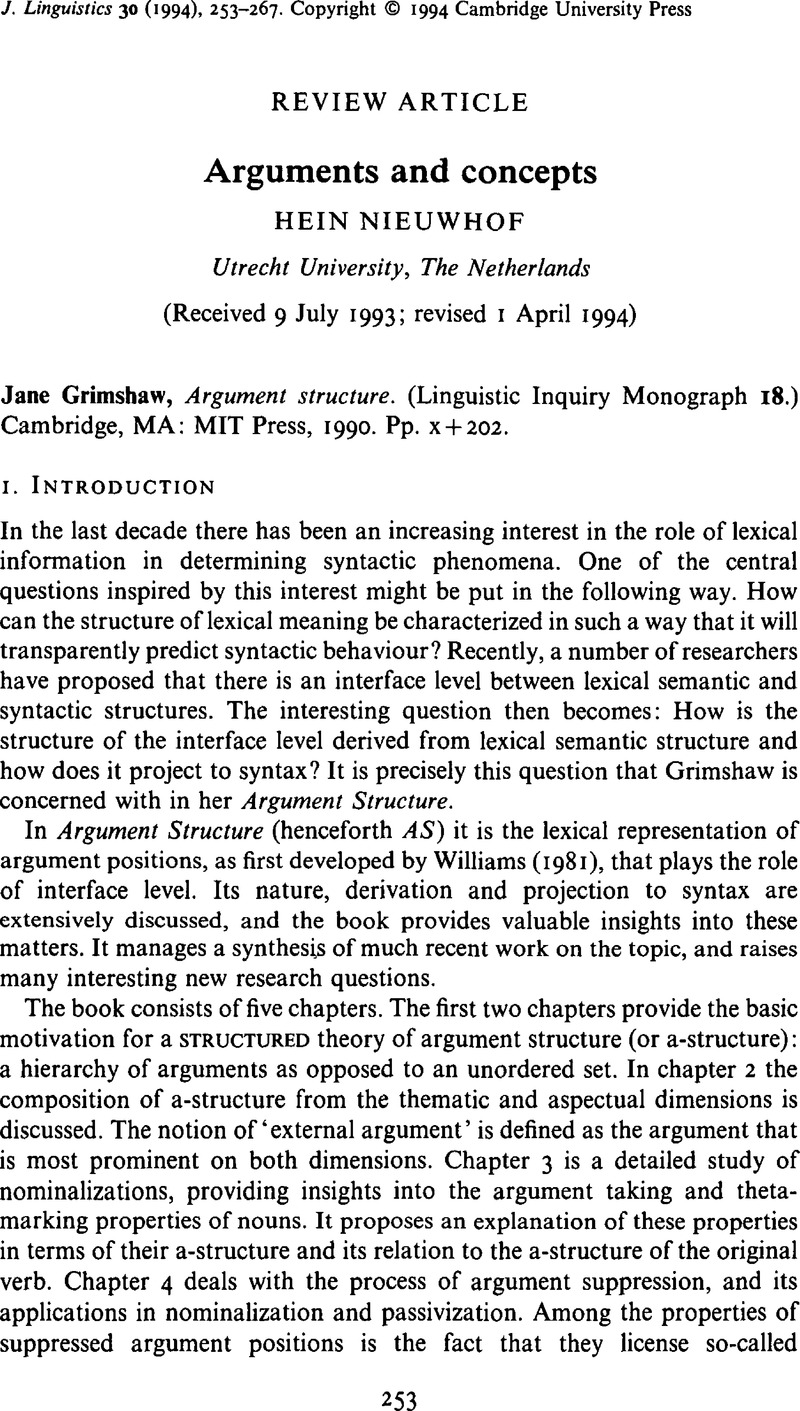No CrossRef data available.
Article contents
Arguments and concepts
Published online by Cambridge University Press: 28 November 2008
Abstract
An abstract is not available for this content so a preview has been provided. Please use the Get access link above for information on how to access this content.

- Type
- Review Article
- Information
- Copyright
- Copyright © Cambridge University Press 1994
References
Belletti, A. & Rizzi, L. (1988). Psych-verbs and Θ-theory. Natural Language and Linguistic Theory 6. 291–352.CrossRefGoogle Scholar
Davidson, D. (1967). The logical form of action sentences. In Rescher, N. (ed.) The logic of decision and action. Pittsburgh: University of Pittsburgh Press. 81–95.Google Scholar
Di Sciullo, A. M. & Williams, E. (1987). On the definition of word. (Linguistic Inquiry Monograph 14.) Cambridge, MA: MIT Press.Google Scholar
Grimshaw, J. & Vikner, S. (1990). Obligatory adjuncts and the structure of events. To appear in Reuland, E. & Abrahams, W. (eds.) Knowledge and language: lexical and conceptual structure. Dordrecht: Kluwer.Google Scholar
Hale, K. & Keyser, S. J. (1988). Explaining and constraining the English middle. In Tenny, C. (ed.) Studies in generative approaches to aspect. (Lexicon Project Working Papers 24.) Cambridge, MA: Center for Cognitive Science, MIT. 41–57.Google Scholar
McConnel-Ginet, S. (1982) Adverbs and logical form: a linguistically realistic theory. Language 58. 144–184.CrossRefGoogle Scholar
Perlmutter, D. (1978). Impersonal passives and the unaccusative hypothesis. In Proceedings of the Fourth Annual Meeting of the Berkeley Linguistics Society, Berkeley, CA: Berkeley Linguistics Society. 157–189.Google Scholar
Pesetsky, D. (1990). Experiencer predicates and universal alignment principles. Ms., MIT.Google Scholar
Roberts, I. G. (1987). The representation of implicit and dethematized subjects. Dordrecht: Foris.Google Scholar
Williams, E. (1981). Argument structure and morphology. Linguistic Review 1. 81–114.CrossRefGoogle Scholar
Zaenen, A. (1988). Unaccusativity in Dutch: an integrated approach (Report CSLI–88–123). Stanford, CA: Center for the Study of Language and Information, Stanford University.Google Scholar
Zwarts, J. (1992b). X′-syntax- X′-semantics, on the interpretation of functional and lexical heads. Utrecht: OTS Dissertation Series.Google Scholar


